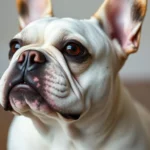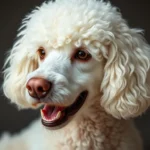
Understanding different dog breeds is essential for anyone looking to bring a furry companion into their home. Among the myriad breeds available, the Yorkinese stands out due to its charming blend of characteristics from its parent breeds: the Yorkshire Terrier and the Pekingese. This guide aims to provide an in-depth look at the Yorkinese, covering its unique traits, care requirements, training needs, and health considerations.
Understanding the Yorkinese
What is a Yorkinese?
The Yorkinese is a delightful hybrid breed resulting from the cross between the Yorkshire Terrier and the Pekingese. This breed emerged as a result of the increasing popularity of designer dogs, with breeders aiming to combine the best traits of these two beloved breeds. The Yorkinese is not yet recognized by major kennel clubs, but it has gained popularity in dog breeding communities for its affectionate nature and manageable size.
The Yorkshire Terrier, known for its feisty personality and luxurious coat, was initially bred for catching rats in textile mills. The Pekingese, with its regal bearing and distinctive flat face, was once a companion of Chinese royalty. When combined, these two breeds produce the Yorkinese, a small dog that is both playful and loving.
Physical Characteristics
The Yorkinese typically weighs between 5 to 12 pounds and stands about 8 to 12 inches tall. This small size makes it an excellent choice for apartment living and families with limited space.
In terms of coat type, the Yorkinese often inherits the silky texture of the Yorkshire Terrier, combined with the thicker, longer fur of the Pekingese. Coat colors can vary widely, including combinations of tan, black, white, and cream.
Distinctive features of the Yorkinese include a rounded face with expressive eyes and floppy ears that can vary in length depending on which parent breed they take after more. Many owners find their unique appearance utterly charming.
Temperament and Behavior
Yorkinese dogs are known for their friendly and affectionate temperament. They are generally playful and enjoy interacting with their human companions. This breed tends to form strong bonds with their families, making them excellent companions for singles, families, and even seniors.
Behaviorally, Yorkinese dogs can be social and energetic, requiring regular interaction and playtime. They are known to be relatively easy to train due to their intelligence and eagerness to please. However, they can exhibit some stubbornness, particularly if they sense they can get away with it.
Overall, the Yorkinese is adaptable and can thrive in various living situations, as long as they receive love and proper care.
Care and Maintenance of Yorkinese
Grooming Needs
Grooming is an essential aspect of caring for a Yorkinese. Due to their long, silky coat, regular grooming is necessary to prevent matting and tangling. It’s recommended to brush your Yorkinese at least two to three times a week. Daily brushing may be required during shedding seasons.
Bathing should be done every four to six weeks, using a gentle dog shampoo to maintain coat health. Additionally, regular nail trimming, ear cleaning, and dental care are crucial for your dog’s overall health. Dental health, in particular, is a significant concern for small breeds, so consider using dental treats or brushing their teeth regularly.
Nutrition Requirements
Feeding your Yorkinese a balanced diet is vital for maintaining their health. High-quality commercial dog food formulated for small breeds is often recommended. Look for options that list meat as the first ingredient and avoid fillers like corn and soy.
Portion sizes can vary based on the dog’s age, weight, and energy level. Generally, splitting their daily food allowance into two meals is best to prevent obesity, a common concern among small breeds. Always consult with your veterinarian for specific feeding guidelines tailored to your Yorkinese.
Exercise and Activity
Despite their small size, Yorkinese dogs require regular exercise to stay healthy and happy. Daily walks of about 30 minutes, along with play sessions, are recommended. Engage them in interactive games like fetch or tug-of-war to provide both physical and mental stimulation.
Mental stimulation is particularly important for this intelligent breed, so consider puzzle toys or training sessions to keep their minds active. Regular exercise will help prevent behavioral issues that can arise from boredom, such as excessive barking or destructive chewing.
Training a Yorkinese
Basic Obedience Training
Training a Yorkinese should begin at an early age to instill good habits and facilitate socialization. Positive reinforcement techniques, such as treats and praise, work best for this breed. Start with basic commands like “sit,” “stay,” and “come” to establish a foundation for obedience.
Early socialization with other dogs and people is crucial. Expose your Yorkinese to different environments, sounds, and experiences to help them grow into well-rounded adults.
Advanced Training Considerations
As your Yorkinese grows, you may encounter behavioral challenges. Common issues include barking and separation anxiety. Address these problems with patience and consistency. For instance, teaching your dog the “quiet” command can help manage excessive barking.
Crate training is beneficial for both you and your dog, providing a safe space for them when you are not home. Start by introducing the crate positively and gradually increasing the time spent inside. Additionally, engaging in activities that stimulate their intelligence, such as agility training or trick training, can alleviate boredom and strengthen your bond.
Health Considerations
Common Health Issues
Like all breeds, Yorkinese dogs are prone to specific health concerns. Common issues include dental problems, patellar luxation (dislocated kneecap), and eye problems such as cataracts. Regular veterinary check-ups and health screenings are essential to catch any potential issues early.
Maintaining a healthy weight through proper diet and exercise can help mitigate some of these health risks.
Preventive Care
Preventive care is critical for the long-term health of your Yorkinese. Stay up to date with vaccinations and regular vet visits. Spaying or neutering your dog is advisable to prevent certain health issues and unwanted behaviors.
Dental health should not be overlooked; consider incorporating dental chews into your dog’s routine and schedule regular dental cleanings with your veterinarian.
Choosing a Yorkinese
Finding a Reputable Breeder
If you decide to purchase a Yorkinese, finding a reputable breeder is crucial. Ask potential breeders about health testing for common breed-specific issues and their breeding practices. A responsible breeder should be open to answering questions and providing health clearances for the puppies.
Be wary of signs that indicate a breeder may not have the dog’s best interest at heart, such as poor living conditions or reluctance to show you the puppy’s parents.
Preparing Your Home
Before bringing your Yorkinese home, ensure you have the necessary supplies. Essential items include a high-quality dog food, water and food bowls, a comfortable bed, toys for stimulation, and grooming tools.
Creating a safe environment is equally important. Remove hazards that could harm your new pet, such as electrical cords and toxic plants. Setting up a designated space for your Yorkinese can help them feel secure in their new home.
Conclusion
The Yorkinese is a delightful breed that combines the best traits of its parent dogs, making it a wonderful addition to any household. With their affectionate nature, manageable size, and playful demeanor, they bond well with families, singles, and seniors alike.
Understanding their grooming, nutrition, exercise, and training needs is vital for ensuring a happy and healthy life for your Yorkinese. If you are considering adding a furry companion to your family, the Yorkinese may just be the perfect choice for you. Their charm and loving nature make them not just pets but cherished family members.









